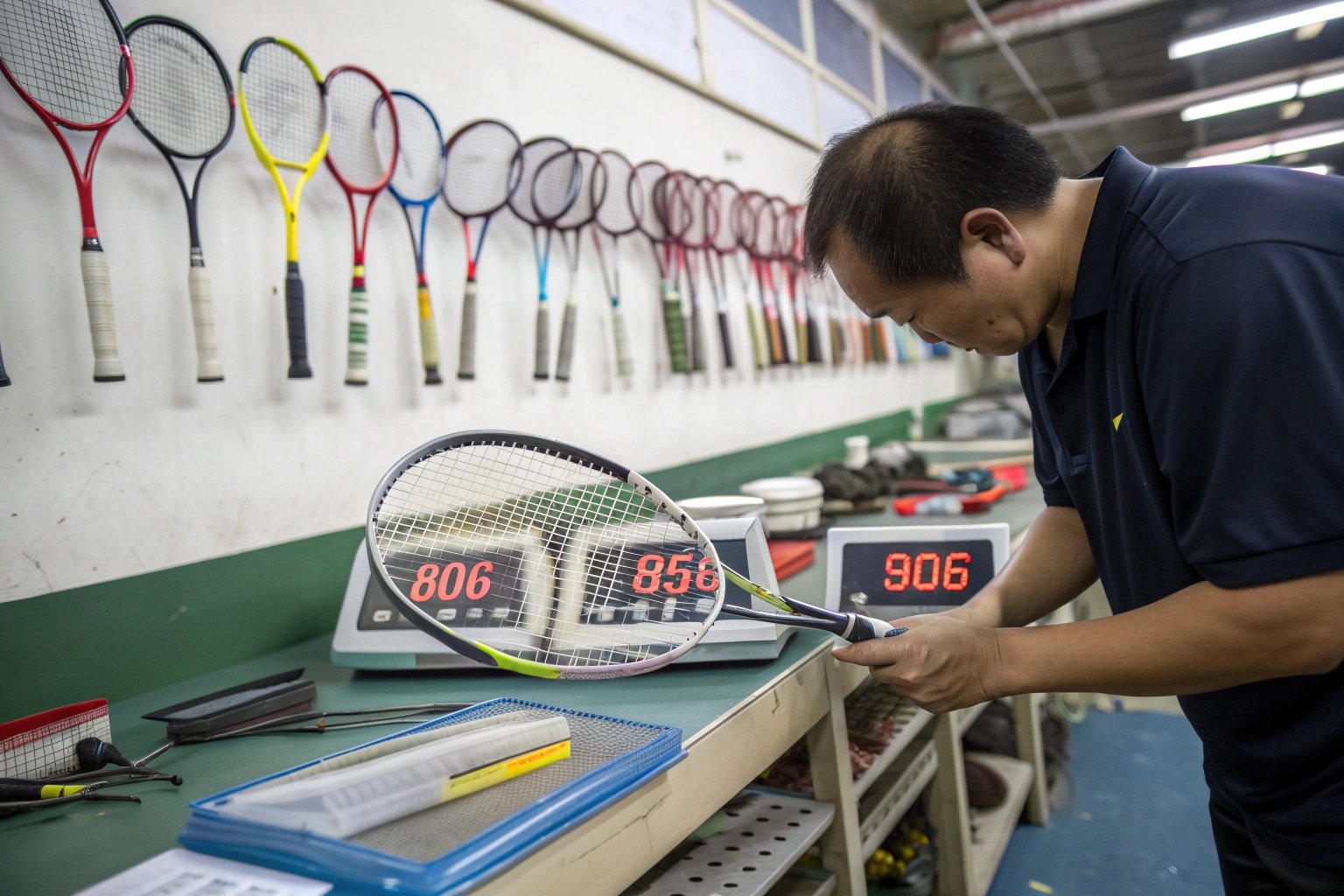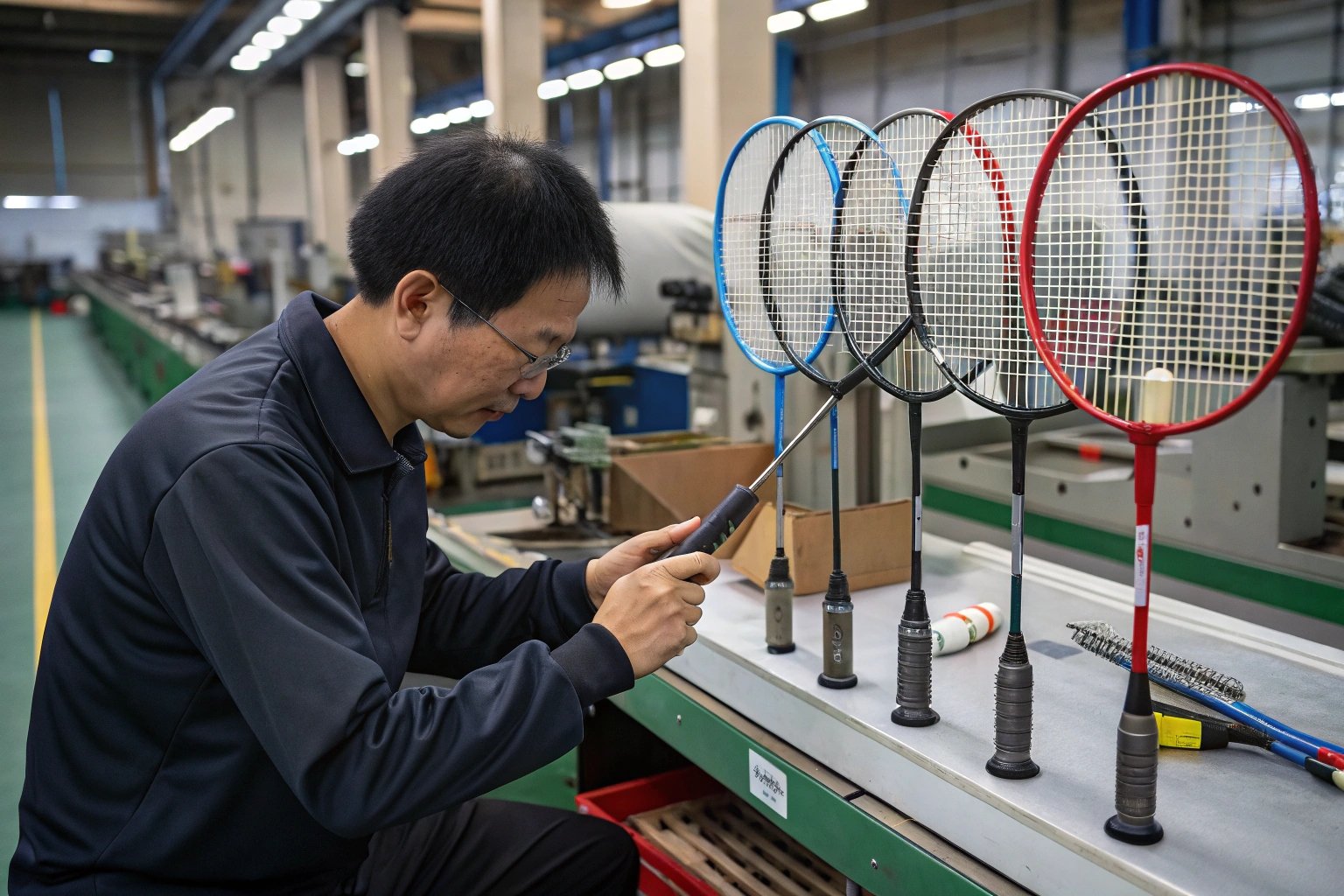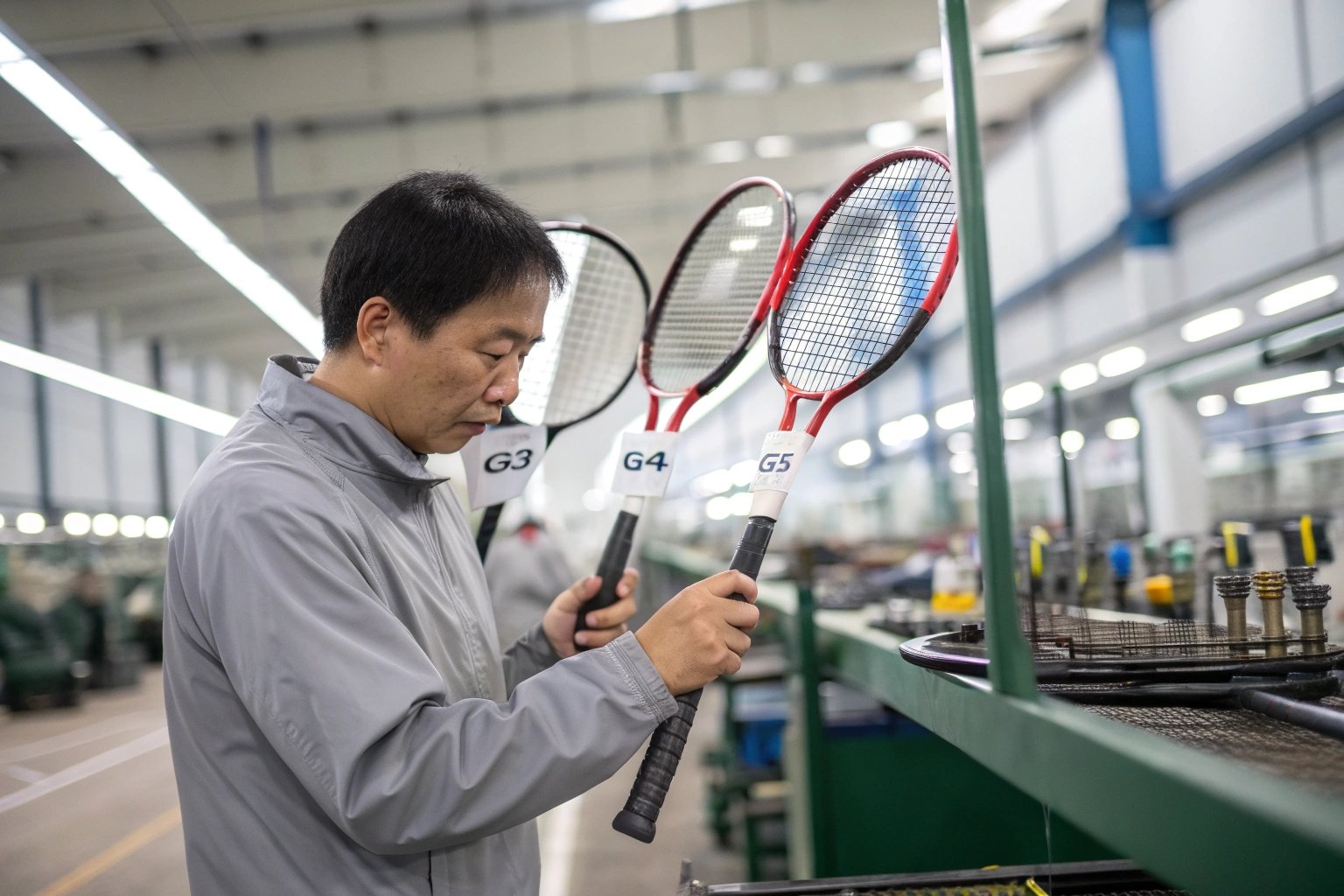The ideal racket depends on various factors such as weight, balance, grip size, flexibility, and your playing style. Let’s break down how to select the perfect racket for your game.

A badminton racket is more than just a piece of equipment; it's an extension of your skill and technique. The right racket can improve your shot accuracy, comfort, and overall performance. The wrong one, however, can hinder your game. Understanding the key factors to consider when selecting a racket will help you make the right choice.
Weight: How Does It Affect My Game?
The weight of your badminton racket plays a significant role in how it feels and performs during a match. Lighter rackets are easier to maneuver, while heavier ones provide more power.
For most players, a racket weighing between 80-90 grams is ideal.

- Lightweight Rackets (80-85g): These rackets are great for players who rely on speed and maneuverability. If you play a fast game with quick exchanges, a lighter racket can help you respond quickly to your opponent’s shots.
- Medium Weight Rackets (85-90g): A medium-weight racket offers a balance between power and control. It’s suitable for intermediate players who need both stability and responsiveness.
- Heavy Rackets (90g and above): Heavier rackets are typically chosen by players who prefer power over speed. These rackets provide more force during smashes and clears, but they may require more strength to handle effectively.
Choosing the right weight depends on your skill level and playing style. If you’re a beginner, it’s best to go for a lighter racket to focus on control and accuracy as you develop your technique.
Balance: Head-Heavy, Head-Light, or Even Balance?
Racket balance refers to the distribution of weight in the racket. The balance point can affect how you handle your shots and what type of shots you’re most comfortable with.
There are three main types of racket balance: head-heavy, head-light, and even balance.

- Head-Heavy Rackets: These rackets are top-heavy, providing more power during smashes and clears. They’re great for aggressive players who rely on attacking shots. However, they may be harder to maneuver for defensive shots or quick reactions.
- Head-Light Rackets: These rackets are lighter in the head, making them easier to maneuver quickly. They’re ideal for players who prioritize quick reactions, control, and defensive play. They also allow for faster net play and precision shots.
- Even Balance Rackets: As the name suggests, these rackets offer a balance of both head-heavy and head-light qualities. They are versatile and suitable for players who play both aggressively and defensively. These rackets offer a good mix of power, control, and maneuverability.
Choosing the right balance will depend on your playing style and whether you prefer power or control. If you play a more aggressive, attacking style, a head-heavy racket might be best. For defensive players, a head-light racket will help with quick reactions.
Flexibility: Does the Shaft Matter?
The flexibility of the racket shaft influences how the racket responds when you hit the shuttle. A more flexible shaft allows for greater power but less control, while a stiffer shaft provides more control but requires more effort for power shots.

- Flexible Shafts: These shafts bend more on impact with the shuttle, creating a trampoline effect that increases power. They’re ideal for beginners or players with less strength who need help generating power. However, they may sacrifice control for power.
- Medium Flex Shafts: These provide a good balance of power and control. Most intermediate players prefer a medium flex shaft because it allows them to both control the shuttle and generate enough power for their shots.
- Stiff Shafts: These offer more control and precision, making them perfect for advanced players who have the skill to generate their own power. However, stiff shafts may require more effort and may be harder on the arm for less experienced players.
The right flexibility largely depends on your playing level and what you prioritize—whether it’s control, power, or a balance of both.
Grip Size: How Important Is Comfort?
The grip size of your racket determines how comfortable it feels in your hand. A grip that’s too large or too small can lead to discomfort, poor control, and even injury over time.

- Small Grip Sizes (G5, G4): Small grips allow for better wrist action and quick adjustments, making them ideal for players who rely on fast, precise shots. Smaller grips also reduce stress on the arm and wrist.
- Medium Grip Sizes (G3): This is the most common grip size and offers a good balance of comfort and control. It works for most players, providing a stable hold without restricting wrist movement.
- Large Grip Sizes (G2, G1): Larger grips are better for players with bigger hands who want extra stability and control during aggressive shots. However, larger grips may limit wrist flexibility and reaction time.
To find your ideal grip size, hold the racket as if you were shaking hands with it. You should be able to fit one finger between your palm and the handle. If it feels too tight or too loose, consider adjusting the grip size.
Material: What’s the Best Choice for My Racket Frame?
The material of the racket frame affects both its durability and performance. Common materials include aluminum, graphite, carbon fiber, and titanium.
The material of your racket frame influences its weight, strength, and flexibility.
Aluminum: Often used in beginner rackets, aluminum is affordable and durable but tends to be heavier and less responsive than other materials.
Graphite: Graphite rackets are lightweight, responsive, and offer excellent performance. They’re common in intermediate to advanced rackets and provide a good mix of power and control.
Carbon Fiber: Carbon fiber rackets are strong, lightweight, and highly durable, providing a solid feel and excellent performance. These are often used in high-end rackets and are ideal for players who need precision and power.
Titanium: Titanium rackets are extremely strong and lightweight. They offer superior durability and performance but are generally more expensive than other materials.
For beginners, aluminum or graphite rackets are a great choice. As you advance, consider upgrading to carbon fiber or titanium for better performance and control.
Conclusion
Choosing the right badminton racket depends on factors such as weight, balance, flexibility, grip size, and material. By understanding your playing style and needs, you can select a racket that enhances your game. Whether you prioritize power, control, or maneuverability, there’s a racket out there that suits you perfectly.